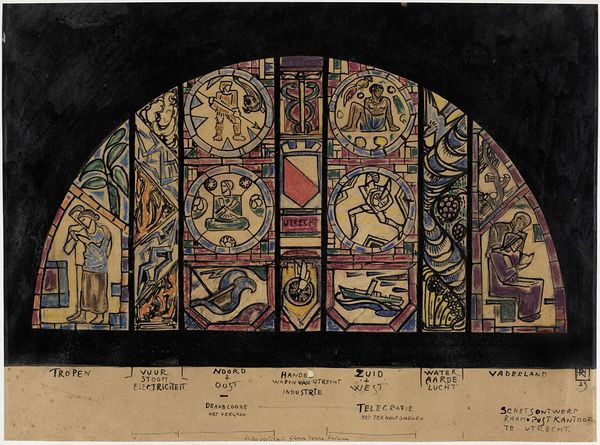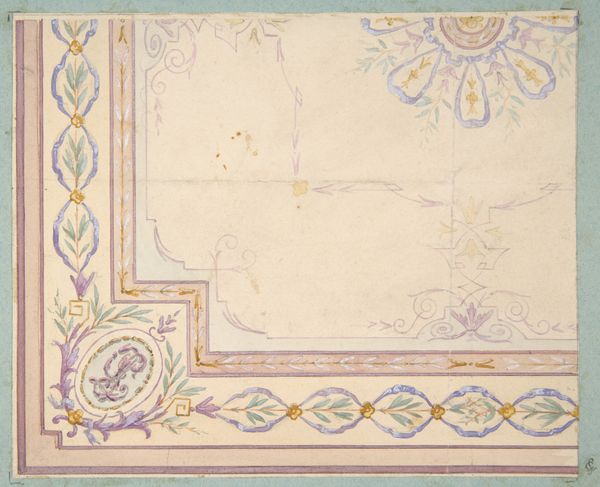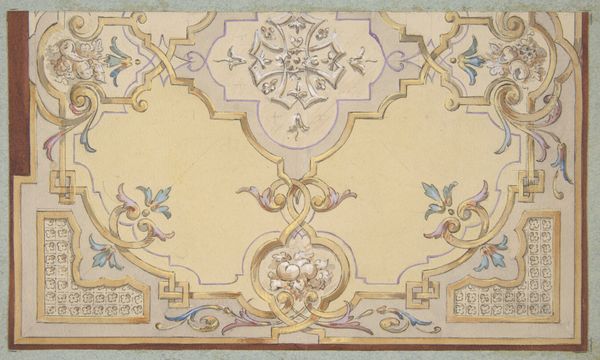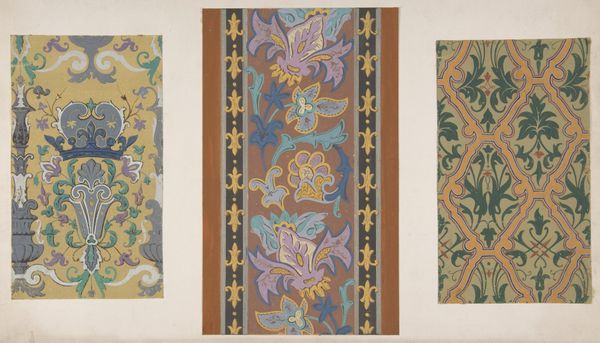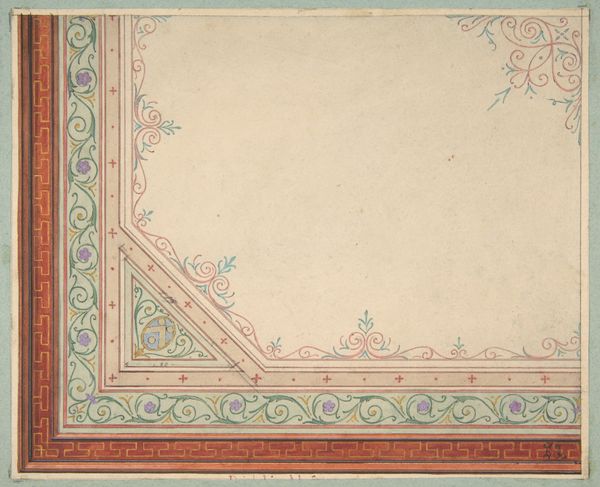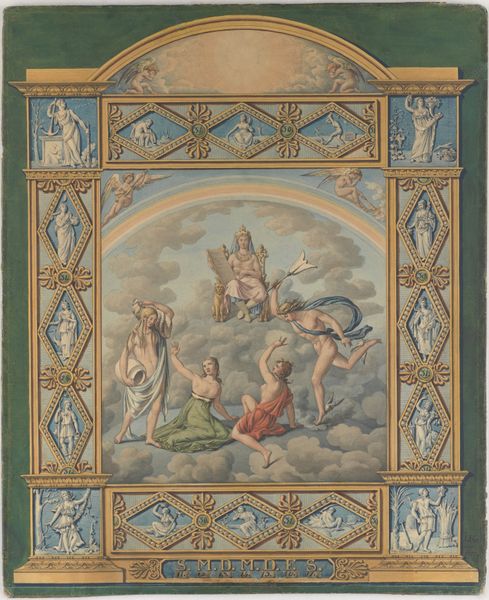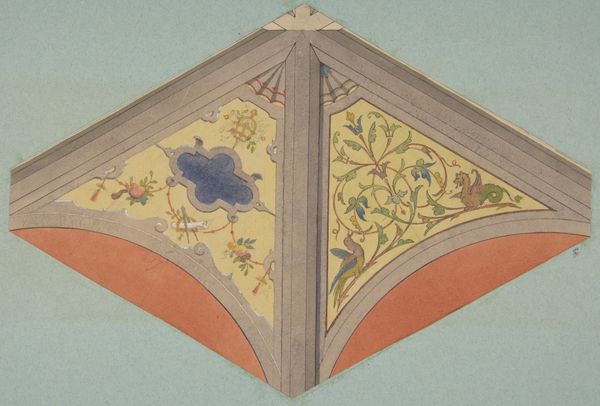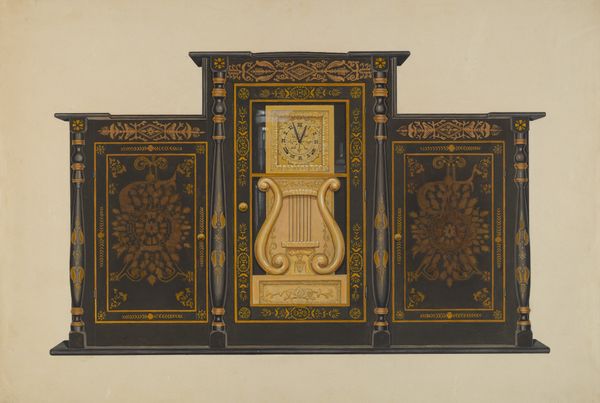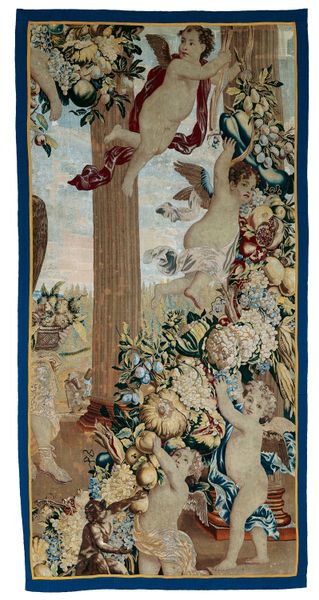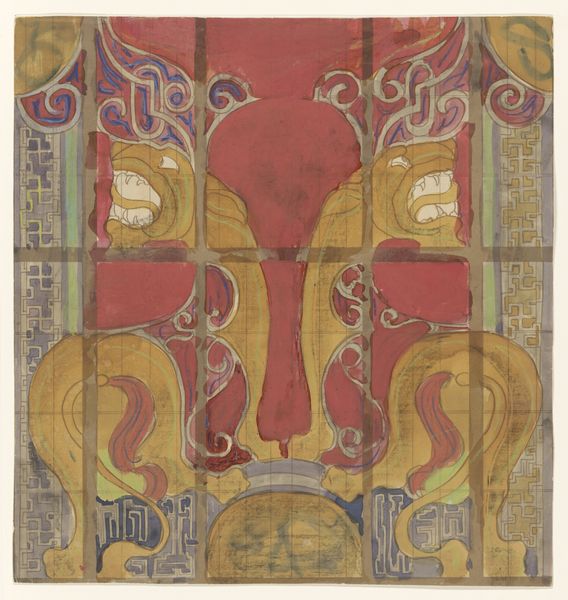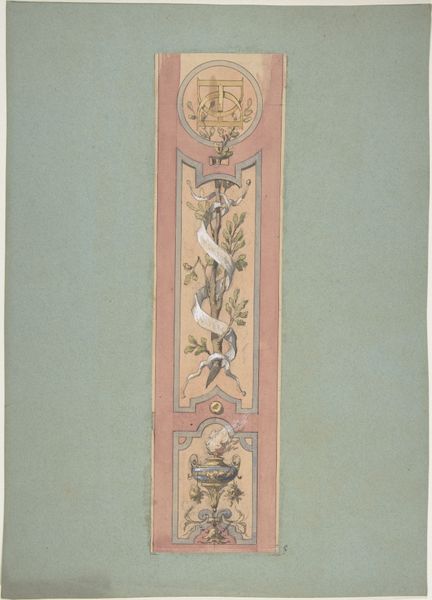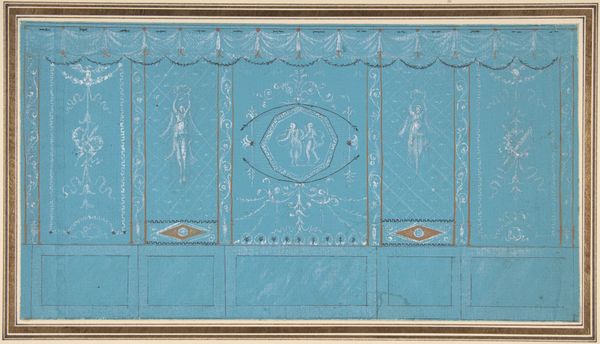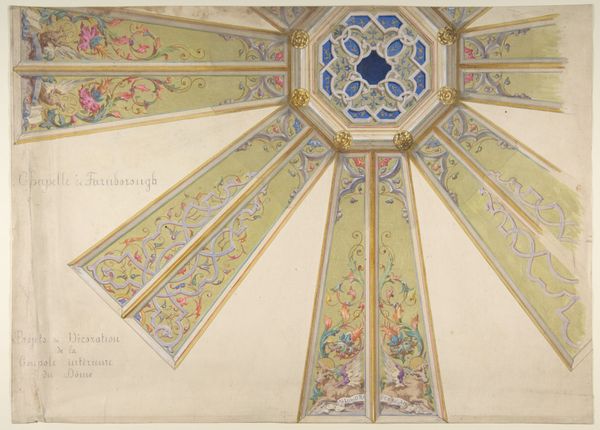
Design for wallpaper with Roman key border, rinceaux, and medallions 1830 - 1897
0:00
0:00
drawing, ornament, print
#
drawing
#
ornament
# print
#
classical-realism
#
geometric
Dimensions: image: 7 13/16 x 9 3/8 in. (19.8 x 23.8 cm)
Copyright: Public Domain
Curator: This wallpaper design by Jules-Edmond-Charles Lachaise, dating from 1830-1897, is fascinating when we consider its intended use. Wallpaper was not simply decoration; it represented industrial production entering the domestic sphere. Editor: It's funny to think of it that way, since it looks very high end! What strikes me is the mix of classical motifs and then what would have been very novel at the time: mass produced wall coverings! How do you see those things relating in this design? Curator: Precisely. The Classical elements --the rinceaux, medallions, Greek key border-- speak to an aspirational middle class eager to adopt signifiers of wealth and taste. But what’s *doing* the speaking here? Printmaking. A medium capable of endless repetition. The *means* is at odds with the *message.* The availability of such design meant new manufacturing opportunities. Who benefits? Who labours? Editor: That’s true, I hadn't thought about that. Was wallpaper a relatively affordable option at the time then, allowing a wider group of people access to what looked like wealth? Curator: Indeed. It brings the debate about ‘high’ art versus ‘low’ craft into sharp focus, doesn't it? A drawing for mass production challenges our very idea of what constitutes 'art' in the first place. Editor: Absolutely. I guess I was thinking about it from a decorative standpoint only, but considering the labour involved really changes how I look at it. Curator: It pushes us to think about the relationship between industry, aspiration, and access. That’s how something as ostensibly simple as wallpaper design can be incredibly telling! Editor: Right. It becomes more about economics than just aesthetics when you consider the means of its creation. Curator: Precisely!
Comments
No comments
Be the first to comment and join the conversation on the ultimate creative platform.
